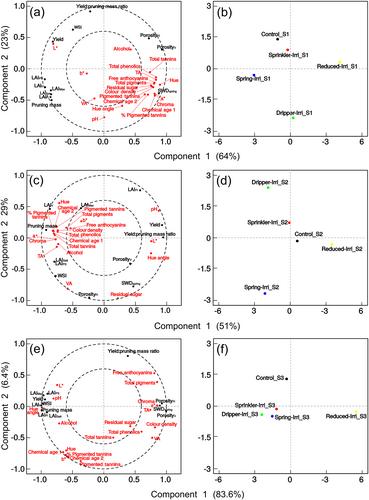Soil water availability during spring modulates canopy growth and impacts the chemical and sensory composition of Shiraz fruit and wine
Abstract
Background and Aim
Reduced rainfall during vine dormancy and supplementary irrigation during winter or at spring impact on vine growth partitioning. We assess the implications that induced changes on canopy growth due to soil moisture availability in spring have on fruit and wine composition.
Methods and Results
Irrigation strategies were assessed in a vineyard where winter rainfall was excluded and irrigation was applied during winter or at spring during three seasons. Reduced soil moisture in spring increased canopy porosity from flowering and increased the concentration of phenolic substances in the fruit and wine. Colour, aroma intensity and fruit attributes typical of Barossa Shiraz wines were enhanced under more open canopies. When soil moisture was restored in spring by natural rainfall or by supplementary irrigation, vines developed denser canopies and phenolic substances were reduced in the fruit and wines. Irrigation at spring following a dry winter altered wine style and was associated with some negative attributes.
Conclusions
Smaller canopies due to reduced water availability at spring improved fruit and wine composition at the expense of yield. Irrigation in spring following a dry winter promoted canopy growth over yield, and impacted negatively on fruit and wine composition.
Significance of the Study
These results stress the importance that soil water availability in spring has on defining wine style, and establishes a framework for the adoption of irrigation strategies that may maintain regional style in a context of a changing climate. These responses can be expected in regions with a Mediterranean climate experiencing a reduction in winter rainfall.


 求助内容:
求助内容: 应助结果提醒方式:
应助结果提醒方式:


